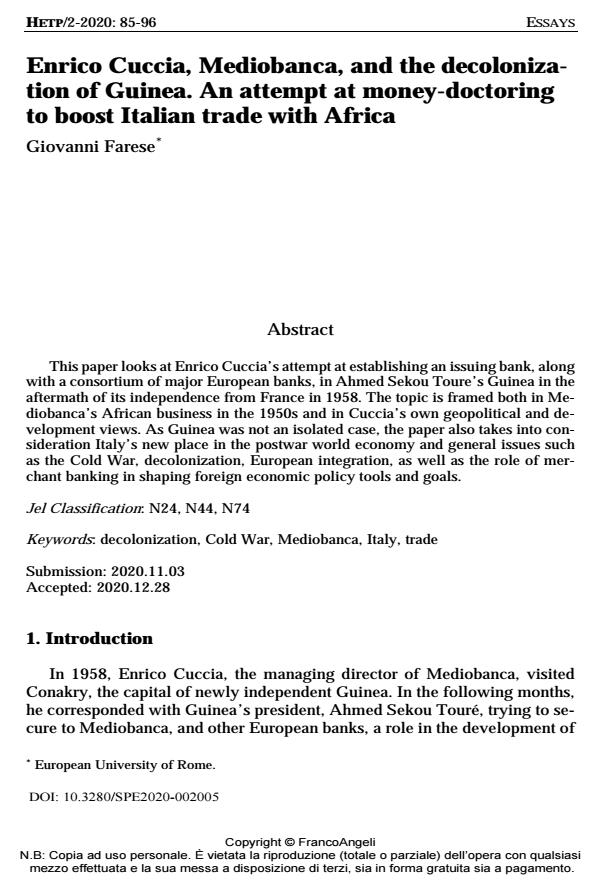Enrico Cuccia, Mediobanca, and the decolonization of Guinea. An attempt at money-doctoring to boost Italian trade with Africa
Journal title HISTORY OF ECONOMIC THOUGHT AND POLICY
Author/s Giovanni Farese
Publishing Year 2021 Issue 2020/2
Language Italian Pages 12 P. 85-96 File size 79 KB
DOI 10.3280/SPE2020-002005
DOI is like a bar code for intellectual property: to have more infomation
click here
Below, you can see the article first page
If you want to buy this article in PDF format, you can do it, following the instructions to buy download credits

FrancoAngeli is member of Publishers International Linking Association, Inc (PILA), a not-for-profit association which run the CrossRef service enabling links to and from online scholarly content.
This paper looks at Enrico Cuccia’s attempt at establishing an issuing bank, along with a consortium of major European banks, in Ahmed Sekou Toure’s Guinea in the aftermath of its independence from France in 1958. The topic is framed both in Mediobanca’s African business in the 1950s and in Cuccia’s own geopolitical and development views. As Guinea was not an isolated case, the paper also takes into consideration Italy’s new place in the postwar world economy and general issues such as the Cold War, decolonization, European integration, as well as the role of merchant banking in shaping foreign economic policy tools and goals.
Keywords: Decolonization, Cold War, Mediobanca, Italy, trade
Jel codes: N24, N44, N74
Giovanni Farese, Enrico Cuccia, Mediobanca, and the decolonization of Guinea. An attempt at money-doctoring to boost Italian trade with Africa in "HISTORY OF ECONOMIC THOUGHT AND POLICY" 2/2020, pp 85-96, DOI: 10.3280/SPE2020-002005